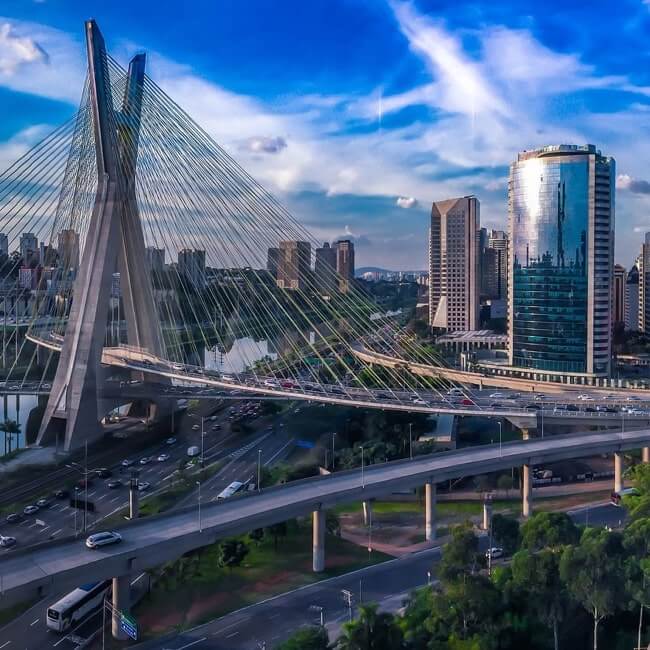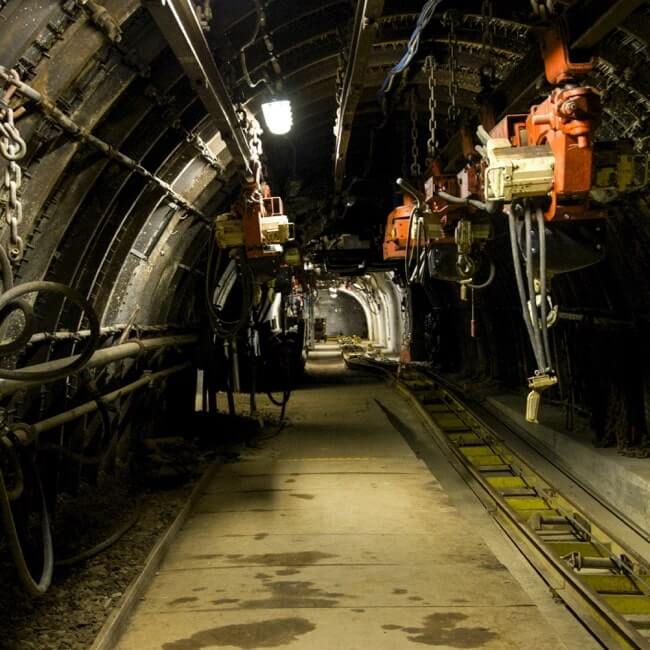How Colombia and Ecuador can make their water sectors flush

Water services are under pressure globally and face even more challenges in Latin American countries that do not encourage private investment or are seeing high levels of uncertainty.
Frequent droughts and floods not only threaten existing infrastructure but also the provision of basic services.
But the situation also offers opportunities.
BNamericas speaks with Laura Lizarazo, global risk analyst at consulting firm Control Risks, about the situation in Colombia and Ecuador specifically.
BNamericas: How are the water sectors of Colombia and Ecuador doing?
Lizarazo: A diagnosis of these sectors must consider quality, coverage and continuity of access.
In both countries, gaps between urban and rural contexts persist, in addition to disproportionately negative effects on vulnerable populations – indigenous communities, Afro-descendants, children, older adults – due to these disparities.
The growing gap between water supply and demand is worrying. Despite the hydrological wealth of Colombia and Ecuador, water supply will continue to decrease in both countries in the coming years. Bogotá, for example, faces a severe water shortage this year.
The decrease in supply is due to demographic factors, the effects of climate change and insufficient efforts to optimize the use of the resource, increase water treatment levels and conserve and protect water sources, particularly surface and groundwater.
BNamericas: And how advanced is coverage?
Lizarazo: Colombia's performance in coverage is remarkable, with challenges still to be resolved: of a total population of 51 million, only 5.3mn do not have access to basic sanitation and 3.2mn to drinking water, the majority of those in rural areas.
According to figures from the housing ministry, access to drinking water in rural areas reaches 57.8%, in departments such as La Guajira, Norte de Santander, Putumayo, Caquetá, Vaupés, Vichada, Guainía, Amazonas, Chocó and Guaviare, it is even below 50%.
The levels of access to basic sanitation are similar: 88.1% of the Colombian population has access to this service, 91.9% of the population in urban areas and 76% of the population in rural areas.
In terms of sanitation, there is an additional worrying condition: only 53.1% of urban wastewater is adequately treated before being discharged into water sources, generating enormous environmental impacts.
Although Colombia is still far from increasing this proportion to 68% in 2030, a goal set in 2020, it has seen a gradual improvement in this aspect in recent years and has favorable conditions, such as greater public investments, to accelerate this progress.
BNamericas: How is the situation in Ecuador?
Lizarazo: Coverage levels of both services are lower than in Colombia, although they have experienced important improvements in the last decade. The coverage of drinking water services in urban areas is 80.9% and for sanitation 62.7%.
Only 31% of wastewater is treated adequately.
BNamericas: What are the strengths and weaknesses in both countries?
Lizarazo: Both have shared strengths and weaknesses.
Among the former are highlighted, for example, the almost complete levels of coverage in urban centers, the abundance and physical-chemical quality of water, and high levels of protection of access to water as a fundamental right.
Both countries have designed extensive regulatory frameworks and important institutional surveillance and control capacities to create a governance system for water and basic sanitation with territorial, social and gender equity approaches.
Regarding weaknesses, there is a high fragmentation of services and enormous differences in the capacity of operators in urban and rural areas.
In the case of Ecuador, the management model of both sectors contemplates the participation of the private sector only exceptionally and under highly restrictive conditions.
For example, concession contracts for the operation and maintenance of drinking water and sanitation networks can only be granted to private companies for a maximum of 10 years.
Unlike Colombia, in this country, the system of public-private partnerships is incipient and has not yet generated any successful experience in these sectors.
BNamericas: Does legislation facilitate project development?
Lizarazo: Both countries have solid regulatory and institutional frameworks, which have improved their execution, monitoring and control capacities in both sectors in a sustained manner over the last decade.
However, both countries have important differences regarding the management models of both services.
Although in both countries water management is established as an exclusive responsibility and prerogative of the State, with the national government and municipalities in charge, Colombia developed a mixed model to enable and encourage the participation of the private sector, with different public-private institutional mechanisms and arrangements, most commonly through PPPs and bidding for contracts with municipalities or public service companies, to provide them partially or totally.
Ecuador's legal and regulatory framework, on the contrary, does not encourage or facilitate the participation of the private sector, concentrating the financing sources for water and sanitation projects almost exclusively in the State, international cooperation and multilateral banking.
BNamericas: How is the current investment and financing climate for this type of projects?
Lizarazo: In both countries there is an enormous appetite and need for financing and investment in both sectors, with different levels of participation and impulse by the State and, to a lesser extent, the private sector.
The governments of both countries in the last decade have increased the allocation and execution of public resources in both sectors, with varying results of success.
With challenging fiscal margins, the governments of [Ecuador's] Daniel Noboa and [Colombia's] Gustavo Petro have turned to multilateral banks to finance these projects, with a priority focus on rural areas.
In general, the processes of public bidding, obtaining permits, licenses, technical and financial pre-feasibility studies to make this type of projects viable in both countries are cumbersome, often opaque and highly vulnerable to corrupt practices.
This is a major barrier to improving the levels and volumes of private sector participation in both sectors.
Furthermore, the successive episodes of political instability in Ecuador, and the consequent periods of institutional paralysis that the country has experienced in the last five years, have significantly slowed down these processes even more.
BNamericas: Are there incentives and opportunities to invest in Colombia and Ecuador in water and sanitation projects?
Lizarazo: The investment needs in drinking water and sanitation services are enormous, while the opportunities and regulatory, tax and public policy incentives vary between countries, by geographic location and by segments of the operation.
For example, in both countries there is a high appetite for investments and financing for the construction of wastewater treatment plants, optimization of distribution networks and sewage systems in rural areas.
In the case of Colombia, there is an important change in focus and priorities under the government of Gustavo Petro, who conceives community managers as the primary actors in both sectors, in opposition to the large public and private companies that have been the protagonists during the last 30 years.
The Petro government has worked to build a public policy and a new investment portfolio to strengthen community organizations for the provision of water services.
So far, the government has guaranteed the financial viability of 87 projects in rural areas, out of 438 contemplated for its entire term [ending in August 2026].
BNamericas: How is the process for the Canoas wastewater treatment plant in Bogotá going?
Lizarazo: Awarding will probably take place in the second half of this year or in early 2025. This is currently the most ambitious project in the country in terms of wastewater treatment, with which the treatment of 70% of the water in Bogotá and 100% in neighboring municipality Soacha is expected to be achieved.
Aqueduct and sewer company ESP, which is the public partner of the project, received four proposals from private bidders in April.
BNamericas: What other important water treatment and similar projects are underway in Colombia?
Lizarazo: Wastewater treatment projects are being developed and register different degrees of progress in the technical structuring, financial viability and bidding processes in Pereira-Dosquebradas, Los Cámbulos in Manizales, Delicias Sur in Chía, and in Cúcuta, among others.
Among the main projects in Colombia is also the Wüin Ülees plan in La Guajira, which seeks to ensure access to drinking water for the Wayúu communities, disproportionately affected by malnutrition and infant mortality, among other reasons, due to the lack of drinking water and sanitation.
Subscribe to the leading business intelligence platform in Latin America with different tools for Providers, Contractors, Operators, Government, Legal, Financial and Insurance industries.
News in: Water & Waste (Ecuador)

CAN countries agree to prepare Andean Environmental Charter
CAN countries agree to prepare Andean Environmental Charter

Ecuador to launch Santa Elena sewerage services call
The contract involves about US$20mn and will be awarded in November.
Subscribe to Latin America’s most trusted business intelligence platform.
Other projects in: Water & Waste (Ecuador)
Get critical information about thousands of Water & Waste projects in Latin America: what stages they're in, capex, related companies, contacts and more.
- Project: Cardenillo hydro plant
- Current stage:

- Updated:
2 months ago
- Project: Chontal hydroelectric project
- Current stage:

- Updated:
2 months ago
- Project: Olmedo multipurpose project
- Current stage:

- Updated:
2 months ago
- Project: Toachi - Pilatón hydro plant
- Current stage:

- Updated:
2 months ago
- Project: Quito Environmental Solid Waste Management Complex
- Current stage:

- Updated:
2 months ago
- Project: Pesillo - Imbabura Potable Water Network
- Current stage:

- Updated:
2 months ago
- Project: Daule - Pedro Carbo river irrigation project
- Current stage:

- Updated:
2 months ago
- Project: Guangarcucho wastewater treatment plant (Guangarcucho WWTP)
- Current stage:

- Updated:
3 months ago
- Project: Quito Wastewater Treatment Plant (Quito River Decontamination Program)
- Current stage:

- Updated:
4 months ago
- Project: Tortugo hydro plant project
- Current stage:

- Updated:
4 months ago
Other companies in: Water & Waste
Get critical information about thousands of Water & Waste companies in Latin America: their projects, contacts, shareholders, related news and more.
- Company: Servicio Autónomo Nacional de Acueductos y Alcantarillados (SANAA)
-
Honduran water authority SANAA is an autonomous state entity established in 1961 to provide potable water, sanitation and technical assistance services throughout the country. B...
- Company: Ministerio de Agua, Ambiente y Servicios Públicos de la Provincia de Córdoba
-
Cordoba's water, environment and public services ministry is part of the Cordoba provincial government in Argentina. Its responsibilities comprise the production, transport, dis...
- Company: Intendencia Departamental de Canelones
-
Uruguay's Canelones Department Intendancy is responsible for promoting the sustainable development of the region and its split into several units, including the Secretariat of P...
- Company: Consórcio Adutor Agreste - L2
- Company: Las Ceibas Empresas Públicas de Neiva E.S.P. (Las Ceibas)
-
Las Ceibas Empresas Públicas de Neiva ESP (Las Ceibas) is a Colombian state company formed in 1959 to provide services of water supply, sewage, cleaning, waste treatment and rec...
- Company: Iberia Renovables Durango S.A.P.I. de C.V. (Iberia Renovables Durango)
-
The description included in this profile was taken directly from an AI source and has not been edited or modified by BNamericas researchers. However, it may have been automatica...
- Company: Dynamo Weltweit Logistik SpA (Dynamo Weltweit Logistik)
-
The description included in this profile was taken directly from an official source and has not been modified or edited by the BNamericas’ researchers. However, it may have been...
- Company: Consórcio Adutor Agreste - L1
-
The Adutor Agreste - L1 consortium, led by Brazilian construction company Passarelli Ltda., part of the local engineering group Grupo Passarelli, and including PB Construções Lt...





